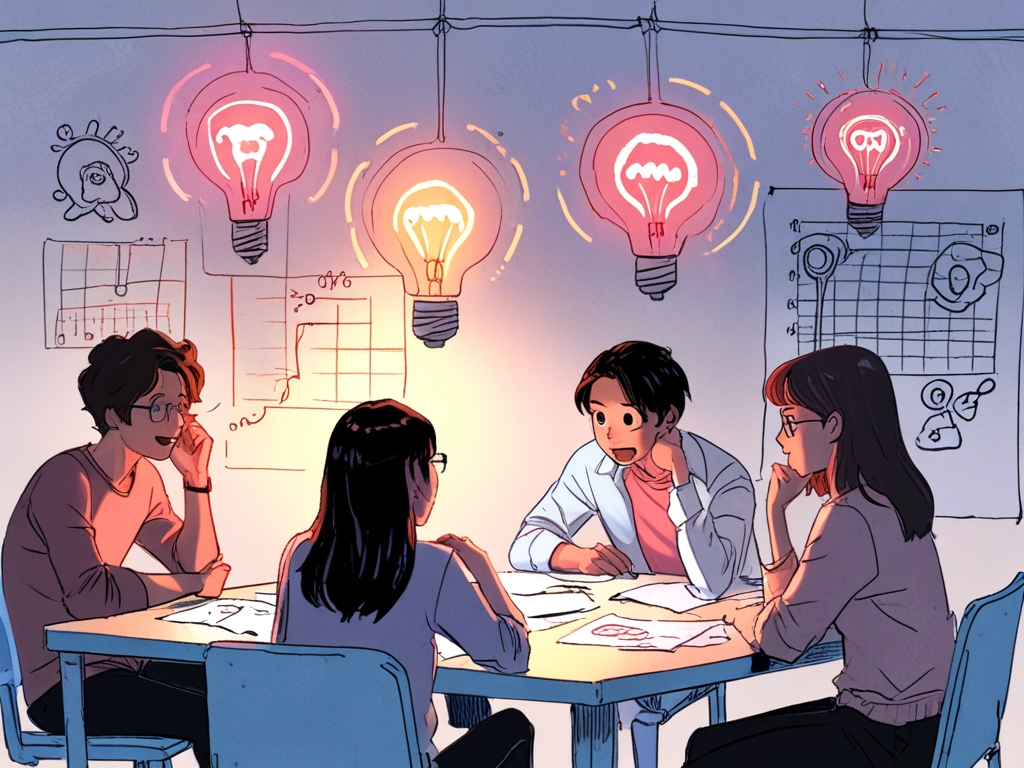Have you ever been stuck on a problem? Or wanted to come up with really creative ideas but felt like your brain was empty?
Well, there’s a cool technique called the “charrette procedure” that can help with that. It’s a way of brainstorming and getting ideas from a group. I’ve used it many times, and it really works!
What is the Charrette Procedure?
The charrette procedure is a structured way to brainstorm ideas and solutions in a group setting. It combines creative thinking activities with feedback loops to generate, explore, and refine a wide range of possibilities.
The word “charrette” comes from the French term for “little cart.” Architecture students would work right up until a little cart came to collect their drawings – so they learned to work efficiently under time pressure.
Similarly, the charrette brainstorming method uses short time limits and rotating roles to create an energetic, productive environment for ideation.
The Benefits of Using It
There are several awesome advantages to using the charrette approach:
- Gets everyone engaged and contributing ideas
- Sparks creativity by combining different perspectives
- Allows building on each other’s thoughts
- Generates a large quantity of ideas quickly
- Provides a structured process to refine the best ideas
- Creates buy-in since everyone is involved
In short, it’s a powerful way to leverage the wisdom of the crowd! And according to research, groups following a structured ideation process like charrette produce 50% more ideas than unstructured groups.
How to Run a Charrette Session
Setting up and running an effective charrette session involves some key steps:
Preparation The Actual Session
After the Session
Let’s look at each phase:
Preparation
- Assemble the right mix of 6-8 people with diverse backgrounds/roles related to the problem space.
- Set a clear focus question or design challenge to ideate around.
- Gather relevant background info, data, examples to prime creative thinking.
- Prepare supplies like whiteboards, post-its, markers, etc.
- Assign roles: a facilitator to manage the process, a recorder to capture ideas, participants to generate ideas.
The Actual Session
The core of the charrette is an iterative cycle of Quick Ideation – Presentation – Feedback that looks like this:
- The facilitator presents the focus question (5 mins)
- Quick Individual Ideation (5 mins)
- Participants quietly generate as many ideas as possible
- Simple Formatted Presentation (5-7 mins each)
- Each person briefly presents their ideas in round-robin style
- The recorder captures ALL ideas
- Clarification (2 mins per presenter)
- The group can briefly ask questions to understand each idea
- ROTATE roles and go to step 2
- Repeat the cycle 3-4 times with new facilitators, recorders, presenters
This rapid, rotating process prevents idea fixation and combines different perspectives. According to researchers, alternating between ideation and feedback maximizes creativity.
After the Session
- The group reviews all captured ideas and highlights the strongest ones
- Determine any ideas that could be combined or expanded
- Discuss potential next steps to further develop the best ideas
By following this sequence, the charrette creates an environment for spontaneous inspiration, while providing a structure to capture, share, and refine ideas into implementable solutions.
Tips for Success
To get maximum value from the charrette, keep these tips in mind:
- Set a brisk but calm pace – don’t rush but keep things moving
- Encourage an open, non-judgmental atmosphere for sharing ideas
- Use the clarification step just to understand ideas, not evaluate them
- Look for creative ways to build on or combine others’ contributions
- Take breaks as needed to re-energize
- Have an engaged facilitator to manage the process
The alternating cycles, time pressure, and diverse roles create an energetic dynamic that helps groups work through complex challenges. With practice, the charrette becomes a powerful creativity technique.
Example Application
Let’s say a school wanted to improve their cafeteria menu and policies. They could run a charrette with:
- Students
- Parents
- Nutrition staff
- Administrators
- Local chef/restaurant owner
- Student activities coordinator
The diverse group could cycle through ideation on questions like:
“How can we make the lunch menu more nutritious, appealing, and sustainable?” “What new policies could create a more positive cafeteria experience?” “How can we reduce food waste while offering good choices?”
By combining perspectives and pushing past obvious ideas, the group could generate and refine a set of implementable solutions in just a few hours.

TL;DR
The charrette procedure is a structured method to brainstorm creative solutions by:
- Assembling a diverse group
- Rapid cycles of individual ideation, sharing ideas, getting feedback
- Rotating facilitator, recorder, and presenter roles
- Building on and combining ideas in an open, non-judgmental way
- Capturing and evaluating the full range of ideas
It leverages the wisdom of crowds through an energizing, time-pressured process. When run effectively, the charrette allows groups to develop innovative solutions to complex challenges.
Q&A
Q: Is this just another typical work meeting?
A: No, the charrette is very different from a regular meeting. It uses rapid rotations, time constraints, and specific roles to create an active environment focused solely on generating and improving ideas.
Q: Does this approach actually lead to good ideas?
A: Research shows that groups following a structured ideation process like the charrette produce significantly more ideas than unstructured sessions. The iterative building and feedback allows refinement of the best ideas into viable solutions.
Q: Isn’t this approach too rigid and structured to allow real creativity?
A: The combination of time pressure, diverse perspectives, and focused roles creates an energizing dynamic that actually enhances creativity. The structure provides a framework but still allows free-flowing idea generation.
Q: How do you prevent one loud voice from dominating the session?
A: The rotating roles and structured format ensures everyone has an equal chance to contribute ideas and feedback without anyone monopolizing the conversation. The open-minded atmosphere also reduces power dynamics.
Q: What if we get stuck and can’t come up with good ideas?
A: Having diverse participants, using example prompts/stimuli, and pushing past initial ideas through the iteration cycles helps groups move beyond obvious solutions. The facilitator also plays a key role in offering new perspectives when needed.
Quiz
- Which is NOT a recommended role in the charrette procedure? a) Facilitator b) Recorder
c) Idea Generator d) Critic - True or False: The charrette involves one long ideation session without breaks. a) True b) False
- What technique is used to prevent fixation on a single idea? a) Taking breaks b) Switching roles c) Adding more people
d) Using brighter lighting - According to research, how much more effective is the charrette than unstructured ideation? a) 10% more effective b) 25% more effective c) 50% more effective d) 100% more effective
- Which sequence best represents the core charrette cycle? a) Present Question -> Clarify -> Ideate -> Feedback -> Rotate b) Ideate -> Present -> Feedback -> Clarify -> Rotate c) Question -> Ideate -> Present -> Clarify -> Feedback -> Rotate d) Feedback -> Rotate -> Ideate -> Present -> Clarify
Answers:
- d
- b
- b
- c
- c
Scoring:
5 correct – Fantastic! You really understand how to run an effective charrette session to maximize creativity
4 correct – Well done, you have a solid grasp of the charrette method
3 correct – Not bad, but review the core process again to optimize your ideation skills
2 or fewer correct – Time to go through the charrette procedure again from the beginning!





